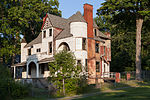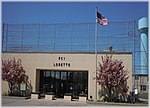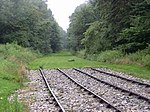Cresson, Pennsylvania

Cresson is a borough in Cambria County, Pennsylvania, United States. Cresson is 80 miles (130 km) east of Pittsburgh. It is above 2,000 feet (600 m) in elevation. Lumber, coal, and coke yards were industries that had supported the population, which numbered 1,470 in 1910. The borough is part of the Johnstown Metropolitan Statistical Area, although state and local sources list it as part of the Altoona area due to being much closer to that city. The population of Cresson at the 2010 census was 1,711.The location was named in 1854 as a memorial to philanthropist Elliott Cresson. Railroads, beginning with the Allegheny Portage Railroad, fueled the growth of the area. Many famous Pittsburgh businessmen, including Charles M. Schwab, Andrew Carnegie, and Henry Clay Frick, maintained summer residences in the area. The borough was incorporated in 1906, along with neighboring Sankertown.
Excerpt from the Wikipedia article Cresson, Pennsylvania (License: CC BY-SA 3.0, Authors, Images).Cresson, Pennsylvania
Eckley Alley,
Geographical coordinates (GPS) Address Nearby Places Show on map
Geographical coordinates (GPS)
| Latitude | Longitude |
|---|---|
| N 40.4625 ° | E -78.586388888889 ° |
Address
Eckley Alley
Eckley Alley
16630
Pennsylvania, United States
Open on Google Maps











